Blogs

Understanding 718 Inconel Plates: An In-Depth Tutorial on Properties and Uses
Introduction
Inconel 718 stands as a pinnacle of engineering excellence, celebrated for its exceptional mechanical properties and resilience in extreme conditions. This nickel-chromium alloy, with its unique composition, provides unparalleled strength and corrosion resistance, making it a preferred choice across critical industries such as aerospace, nuclear, and oil and gas.
As the demand for high-performance materials escalates, understanding the intricate details of Inconel 718—from its composition and mechanical properties to its diverse applications and advanced processing techniques—becomes essential for procurement managers and industry professionals alike.
This article delves into the multifaceted world of Inconel 718, exploring its key attributes, innovative manufacturing methods, and the strategic advantages it offers in today’s competitive landscape.
Overview of Inconel 718: Composition and Mechanical Properties
The 718 inconel plate is known for its high-performance nickel-chromium composition, exceptional mechanical characteristics, and capacity to endure extreme conditions. Its composition typically comprises approximately:
- 50% nickel
- 19% chromium
- 5% iron
alongside smaller quantities of niobium, molybdenum, and titanium. This specific blend enhances the alloy’s remarkable yield and tensile strength, particularly at elevated temperatures, making the 718 inconel plate ideal for demanding applications in aerospace, oil and gas, and chemical processing sectors.
Significantly, the 718 inconel plate exhibits superior corrosion resistance, ensuring longevity in aggressive environments. The mechanical properties are significantly enhanced through precision manufacturing and heat treatment, striking an optimal balance between ductility and strength. For instance, hot-cold working within the temperature range of 1700°F to 1850°F (927°C to 1010°C) improves strength, especially when service temperatures remain below approximately 1100°F (593°C).
This treatment is crucial for reliable performance under thermal stress, as evidenced by studies indicating a coefficient of thermal expansion ranging from 7.1 to 16.0 x 10(-6)/°F from 200°F to 1400°F. Additionally, the melting point of alloy 718 ranges from 1260 to 1336 °C (2300 to 2440 °F), with a solidus at 1260 °C (2300 °F) and a liquidus at 1336 °C (2440 °F), further underscoring its thermal robustness. Such characteristics not only validate the material’s engineering significance but also its practical applications across various industries.
Mica tape products, recognized for their high-temperature resistance and electrical insulation, enhance the use of the 718 inconel plate in critical applications, ensuring safety and performance in extreme conditions. For further insights, a new Rare Earth Overview Video is available for viewing, and it is recommended to refer to MatWeb’s disclaimer and terms of use regarding this information.
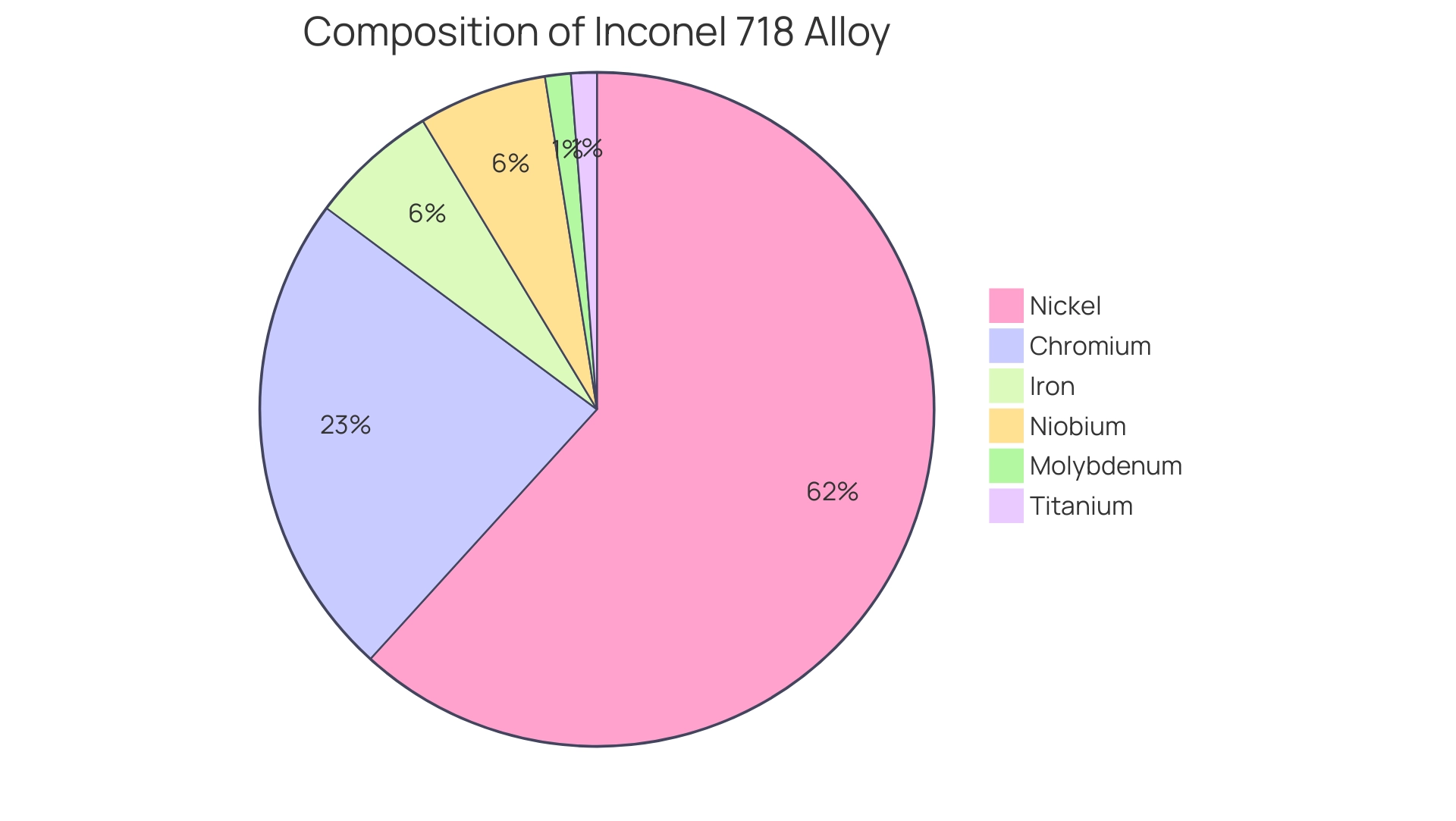
Applications of Inconel 718 in Industry: From Aerospace to Nuclear
Alloy 718 is a cornerstone material in the aerospace industry, particularly for manufacturing components like turbine engines, where exceptional strength and corrosion resistance are essential. According to aerospace engineers, its ability to endure extreme operating conditions makes it indispensable in this field. Furthermore, this alloy is increasingly utilized in nuclear reactors, where it demonstrates remarkable resistance to both high temperatures and radiation.
Notably, the thickness of significant diffusion of elements at the interface has been measured at 5 µm, emphasizing its robust properties. The durability of this composite extends beyond aerospace and nuclear applications; it is also utilized in:
- Oil and gas extraction
- Chemical processing
- Gas turbines
where reliability is paramount. The versatility of this alloy establishes it as a critical material across sectors that demand stringent performance standards.
Recent case studies, such as those focusing on the additive manufacturing of the 718 inconel plate, highlight innovative applications and provide valuable data on the effectiveness of these techniques. As Majid Laleh observes in ‘Progress in Materials Science,’ the versatility of alloy 718 continues to facilitate progress in high-performance environments.
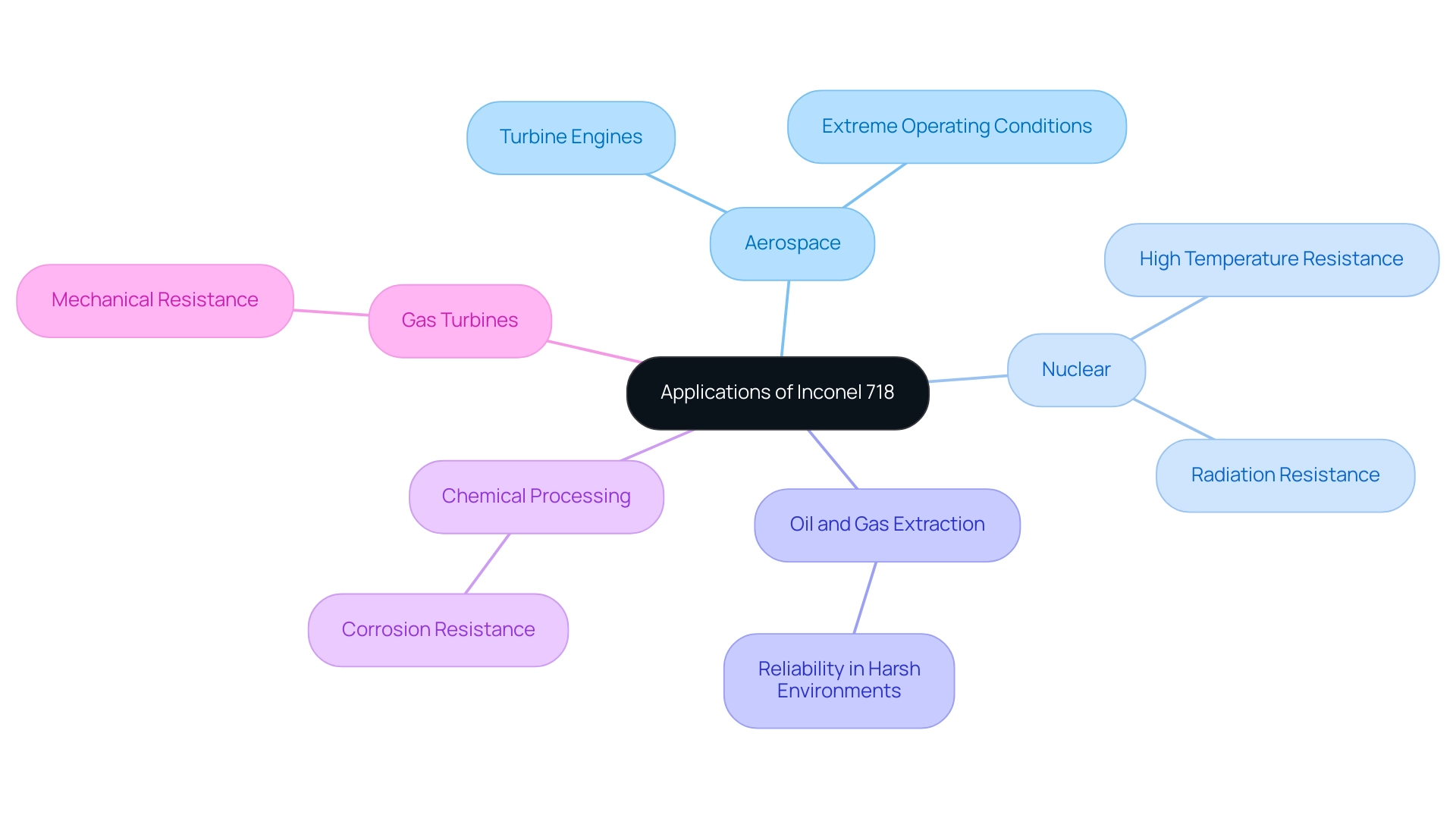
Key Properties of Inconel 718: Corrosion Resistance and Thermal Stability
Alloy 718 is famous for its exceptional resistance to deterioration, especially in settings where contact with acids and saltwater is common. This resilience is primarily due to its high nickel and chromium content, which facilitates the formation of a robust protective oxide layer on the alloy’s surface. Recent studies have shown that at temperatures of 20°C and 50°C, samples of the 718 inconel plate, which is aerospace-grade, displayed evidence of crevice and pitting degradation, while those adhering to API 6ACRA specifications experienced primarily crystallographic attacks within crevices.
Significantly, the carbon content allowed in the ASTM standard is almost three times that of the API 6ACRA specification, which affects the resistance characteristics to rust. J.W. stated, ‘Then the deterioration products shed into the electrolyte due to the dissolution of the boundary, leaving a large number of pits,’ highlighting the critical nature of understanding deterioration behavior.
These findings emphasize the necessity for ongoing research to definitively ascertain the impact of grain size on the resistance of the 718 inconel plate. While this material demonstrates remarkable thermal stability, preserving its structural integrity at high temperatures up to 1300°F (700°C) and resisting oxidation, it is important to consider alternatives such as copper nickel combinations in certain applications. As per the FAQ context, copper nickel mixtures provide considerable benefits, such as:
- High resistance to rust in marine settings
- Outstanding thermal and electrical conductivity
- Good ductility
- Ease of fabrication
- Remarkable antimicrobial characteristics
Unlike certain materials that may show localized deterioration under specific circumstances, copper nickel compositions offer a stronger option for uses where cleanliness is crucial. The research titled ‘Seawater Resistance of Alloy 718‘ further illustrates the localized corrosion performance of various metals, including the 718 inconel plate, which provides valuable insights for procurement managers seeking optimal material solutions in critical industries such as aerospace and oil and gas.
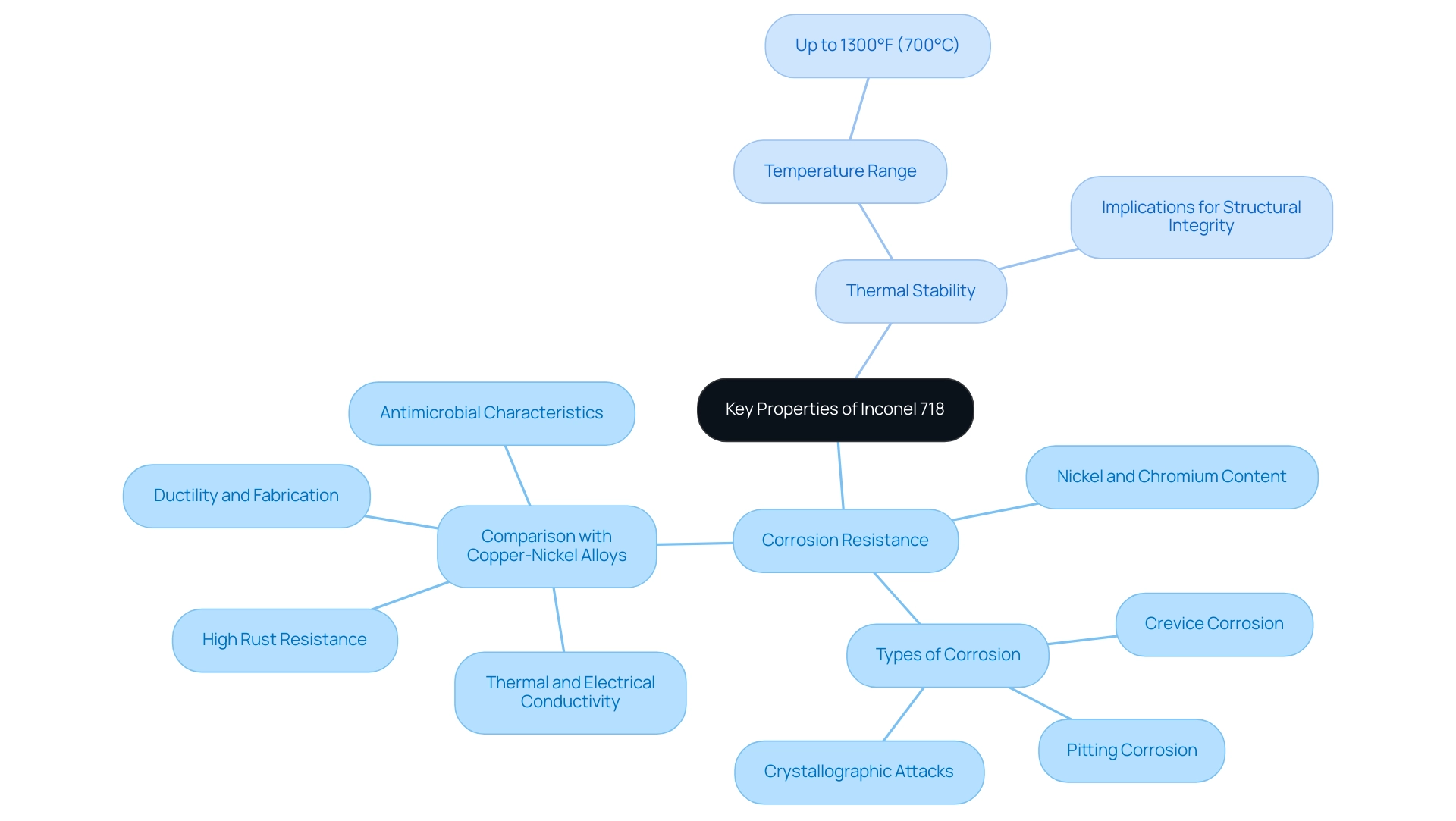
Welding and Fabrication Techniques for Inconel 718
Welding techniques and filler materials require a meticulous approach when working with a 718 inconel plate. Gas tungsten arc welding (GTAW) is often favored due to its precision and control, which are essential for high-quality welds in this challenging alloy. Preheating is a critical step, as it helps mitigate cracking and ensures effective fusion.
Choosing filler substances that closely resemble the composition of the 718 inconel plate is equally essential for maintaining mechanical integrity. Additionally, directionally solidified material has been shown to exhibit 15% to 20% superior high-temperature strength and creep properties compared to equiaxed products, underscoring the benefits of optimized welding techniques. Recent advancements in welding techniques have highlighted that refining the fusion zone dendritic structure in IP-TIG welding minimizes the Laves phase, enhancing joint properties.
According to Devendranath Ramkumar,
The IN-718 joints developed using optimized IP-TIG parameters exhibited 22–32% higher strength and superior corrosion resistance than TIG welded IN-718 joints and comparable to EBW and LBW IN-718 joints.
This illustrates the impact of refined welding techniques on the material’s performance. Furthermore, a case study on welding processes for the 718 inconel plate identifies challenges such as heat affected zone (HAZ) cracking and weld defects, reinforcing the need for meticulous techniques and practices.
In terms of fabrication, methods such as machining and forming should be employed with specialized tools to handle the alloy’s hardness and strength effectively, ultimately ensuring the production of high-quality finished products.
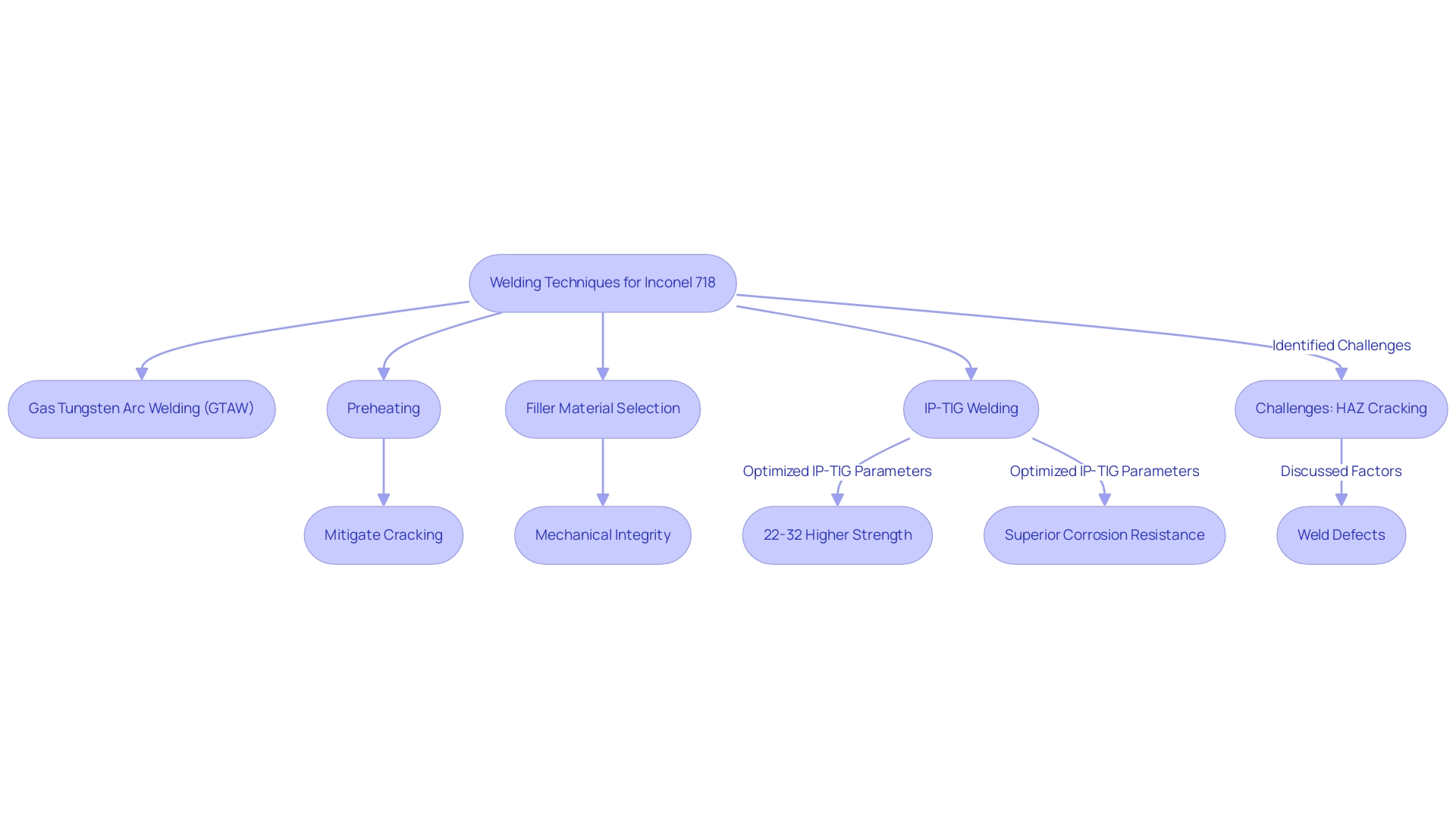
Innovations in Processing Inconel 718: Additive Manufacturing and Heat Treatment
Recent advancements in additive manufacturing techniques for nickel-chromium alloys have significantly transformed production capabilities, enabling the creation of complex geometries that were previously unattainable with conventional manufacturing methods. This innovative approach not only minimizes material waste but also enhances design flexibility, allowing manufacturers to optimize part performance and functionality. Furthermore, the application of advanced heat treatment processes, such as solution treatment and aging, is essential for unlocking the full mechanical potential of the 718 inconel plate.
These processes enhance strength and ductility, making the material suitable for demanding applications. Notably, a case study highlights the role of Tin particles in enhancing the creep properties of IN718C high-temperature alloys, demonstrating how these particles contribute to improved performance under stress. Additionally, the addition of 1.5 wt% nano-TiC has been shown to facilitate the transformation of long-striped Laves phases into granular shapes, resulting in reduced porosity and finer grain structures.
As a result, the wear rate of coatings with 0.5 wt% HFC decreased by 50% compared to IN625, showcasing the quantitative performance improvements associated with this nickel-chromium alloy. Such innovations lead to enhanced performance metrics and decreased lead times, ultimately making this material a competitive choice across various industries. As operators become more aware of these additive manufacturing technologies and their capabilities, the potential for the 718 inconel plate in high-performance applications continues to grow.
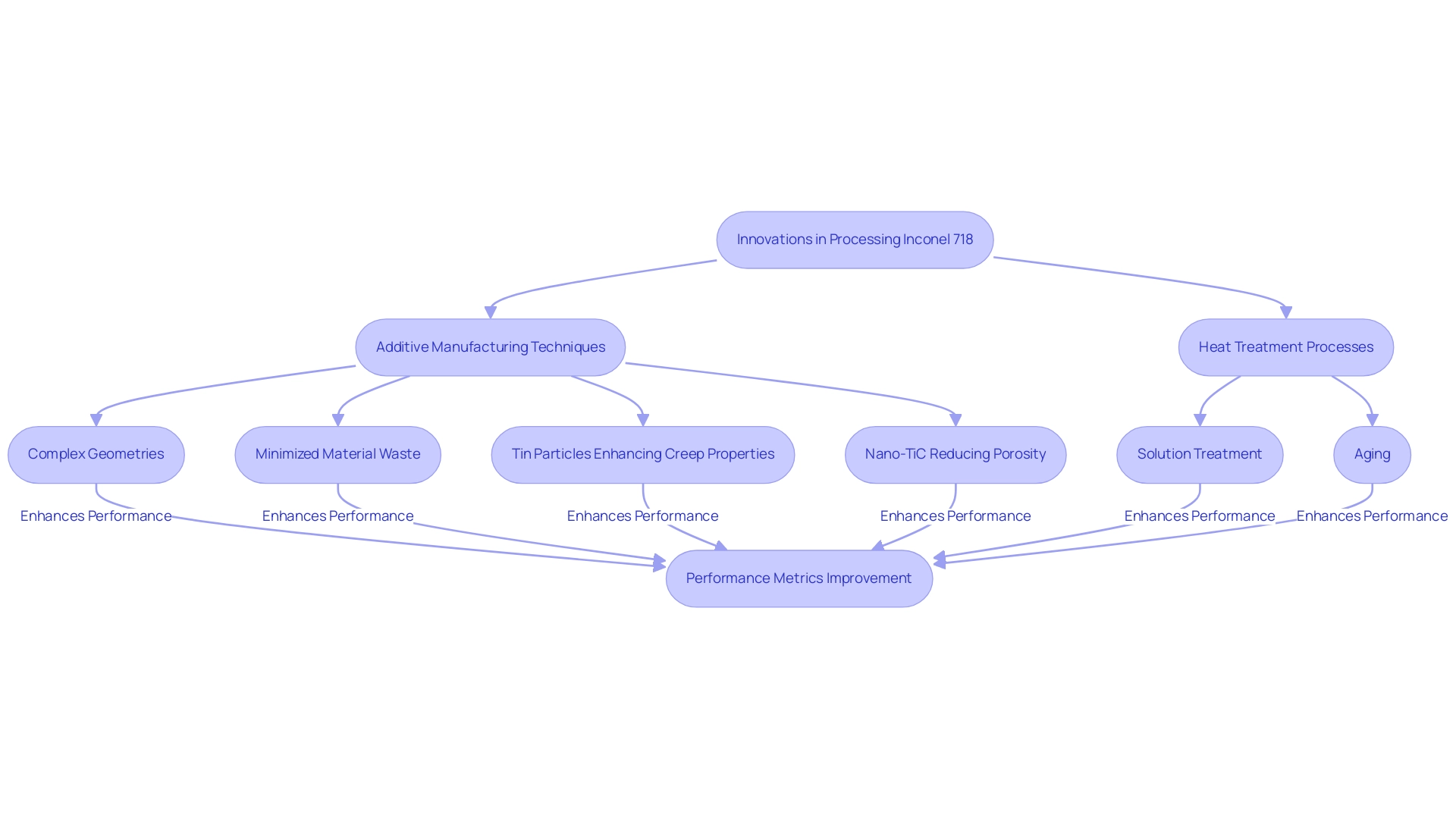
Conclusion
Inconel 718 emerges as a critical material that combines exceptional mechanical properties with remarkable resilience, positioning itself as an indispensable choice in demanding industries such as aerospace, nuclear, and oil and gas. Its unique composition, characterized by high nickel and chromium content, not only enhances its strength and corrosion resistance but also ensures longevity in extreme environments. The thorough exploration of its mechanical attributes, including yield strength and thermal stability, underscores the engineering significance of this alloy.
The diverse applications of Inconel 718 further illustrate its versatility and strategic importance. From turbine engines in aerospace to components in nuclear reactors, its ability to withstand high temperatures and corrosive conditions makes it a reliable option across various sectors. Innovations in processing techniques, particularly additive manufacturing and advanced heat treatment, have opened new avenues for optimizing the performance and functionality of Inconel 718, thereby solidifying its position as a leader in high-performance materials.
As industries continue to evolve and demand higher standards, understanding the intricacies of Inconel 718 becomes paramount for procurement managers and industry professionals. The ongoing research and advancements in welding and fabrication techniques further enhance its applicability, ensuring that Inconel 718 remains at the forefront of material solutions for critical applications. Embracing this alloy not only meets the rigorous demands of modern engineering but also paves the way for future innovations in high-performance environments.




